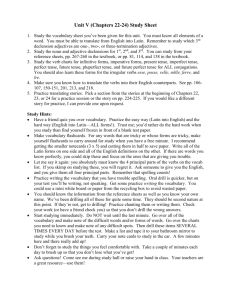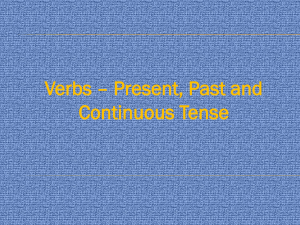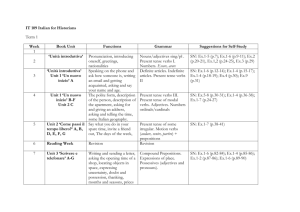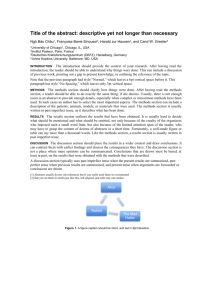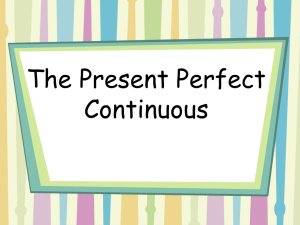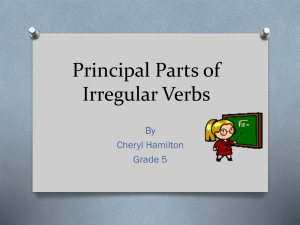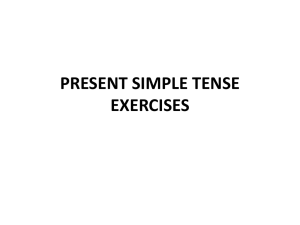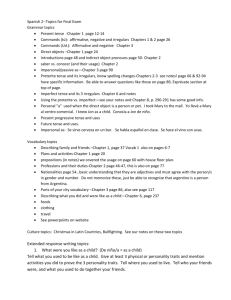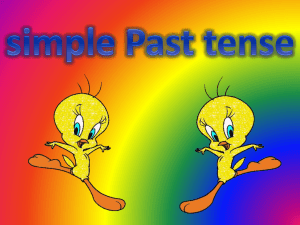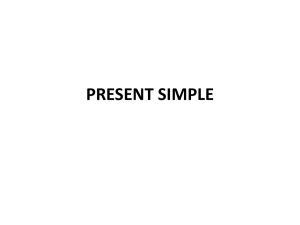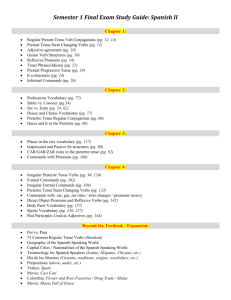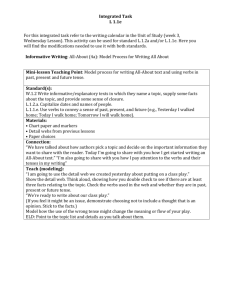Overview
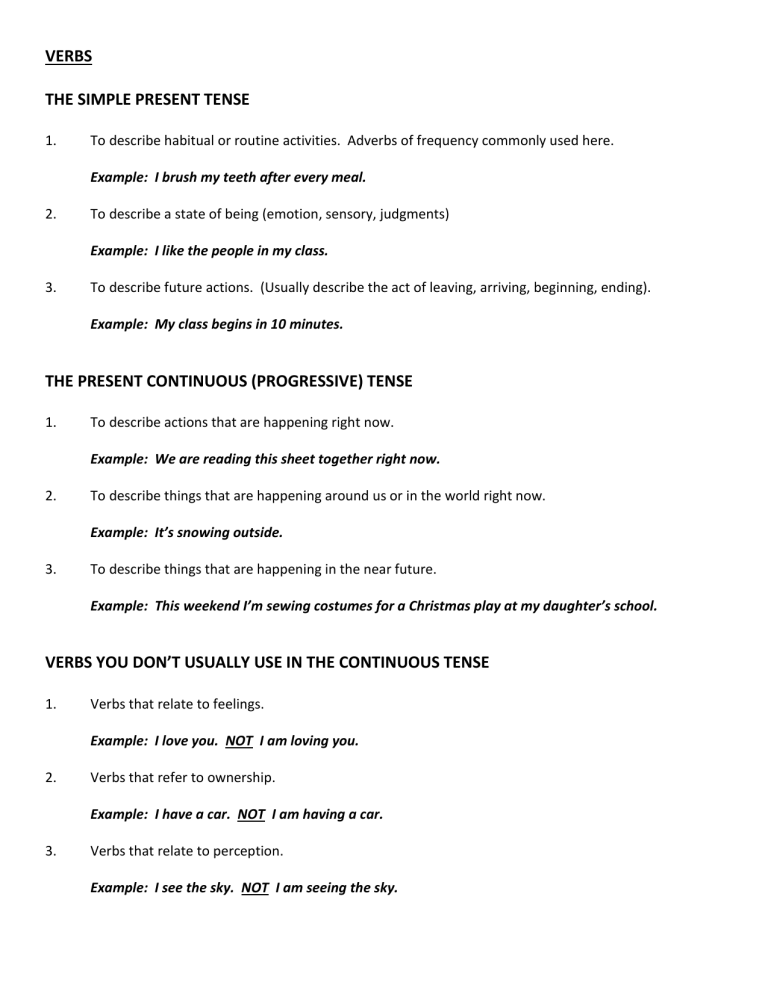
VERBS
THE SIMPLE PRESENT TENSE
2.
1.
3.
2.
1.
3.
To describe habitual or routine activities. Adverbs of frequency commonly used here.
Example: I brush my teeth after every meal.
To describe a state of being (emotion, sensory, judgments)
Example: I like the people in my class.
To describe future actions. (Usually describe the act of leaving, arriving, beginning, ending).
Example: My class begins in 10 minutes.
THE PRESENT CONTINUOUS (PROGRESSIVE) TENSE
2.
1.
3.
To describe actions that are happening right now.
Example: We are reading this sheet together right now.
To describe things that are happening around us or in the world right now.
Example: It’s snowing outside.
To describe things that are happening in the near future.
Example: This weekend I’m sewing costumes for a Christmas play at my daughter’s school.
VERBS YOU DON’T USUALLY USE IN THE CONTINUOUS TENSE
Verbs that relate to feelings.
Example: I love you. NOT I am loving you.
Verbs that refer to ownership.
Example: I have a car. NOT I am having a car.
Verbs that relate to perception.
Example: I see the sky. NOT I am seeing the sky.
* Some of these verbs are used in the continuous when they are used in an idiomatic expression. Example: I am having a cup of coffee. Or, they may sometimes be used this way by writers for artistic purposes.
Here is a list of such verbs that would not be used in the continuous tense. appear have appreciate hear be believe cost dislike need know like love mean seem own possess smell sound prefer taste recognize understand remember want see hate
SIMPLE PAST TENSE
Describes some event that happened at one particular point in the past. (Will often include expressions like yesterday, last year, 10 minutes ago.
Example: This morning I made my children their lunches to take to school.
PAST CONTINUOUS (PROGRESSIVE) TENSE
Describes some event that happened in the past but emphasizes the duration of the action. It can take a long time or a short time.
Example: I was working all weekend.
Example: I was listening to the news last night at 10 o’clock.
The past continuous is often used in relation to another non-continuous action.
Example: She was washing dishes when the phone rang.
FUTURE TENSE
3.
4.
5.
There are several ways to express future time.
1.
2.
Using the simple present: The bus comes in 10 minutes. (Needs a time expression)
Using the present continuous: The bus is coming in 10 minutes. (Often needs a time expression)
Using the future tense: The bus will come in 10 minutes.
Using the future progressive: The bus will be coming in 10 minutes.
Using be going to: The bus is going to come in 10 minutes.
PRESENT PERFECT TENSE
This tense is made up of the auxiliary (helping word) have/has plus the past participle:
Example: I have read that book.
We use the present perfect in two ways:
1. To embrace the past, the present, and the future all at once.
Example: I have started each day in the same manner for the past 50 years.
2. To indicate an indefinite past (the specific time is not important).
Example: He has learned to speak 3 languages.
PAST PERFECT TENSE
The past perfect tense is used to express something that occurred in the past, before something else that happened in the past.
Example: We didn’t think too much of the movie, perhaps because we had read the book.
